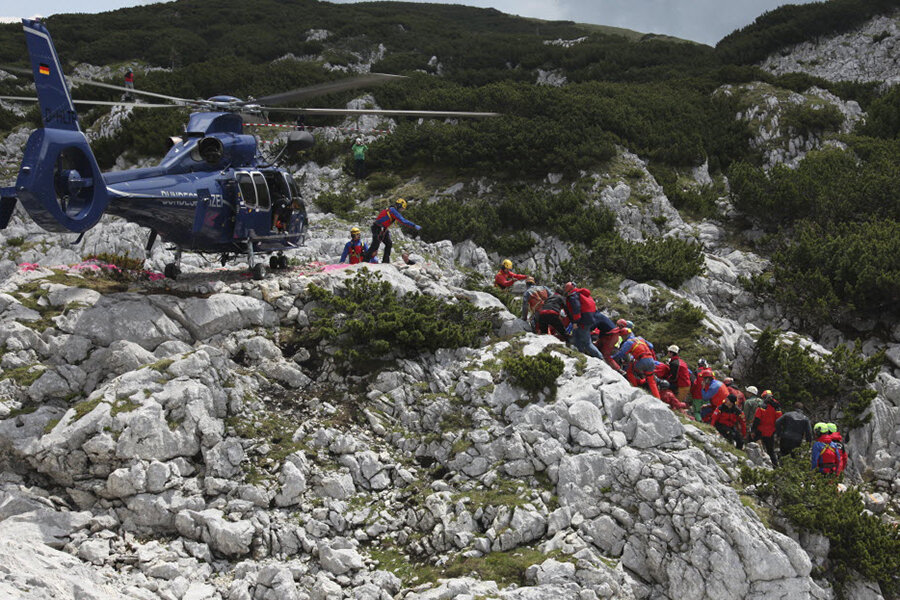German caver rescued after 2 weeks underground
Loading...
| BERLIN
After spending nearly two weeks underground, an injured German caver was hauled out of the country's deepest cavern Thursday by a multinational rescue operation that involved more than 700 people.
Johann Westhauser, an experienced caver, had gone into the Riesending cave system in the Alps with two companions to carry out research and measurements. He was hit in the head during a June 8 rock fall while nearly 1,000 meters (3,280 feet) underground.
After lengthy preparations, rescue teams five days later began the arduous task of hauling him up through a labyrinth of narrow passages and precipitous vertical shafts.
Rescuers brought the 52-year-old the final 180 meters (590 feet) to the surface Thursday and immediately sent him to a hospital.
"A chapter of Alpine rescue history has been written here over the last 12 days," Bavarian mountain rescue chief Norbert Heiland said, adding that officials initially doubted whether a rescue was possible.
The rescue became a media event with multi-page spreads in German tabloids.
In all, 728 people from Germany, Austria, Switzerland, Italy and Croatia participated in the operation, operation director Klaus Reindl told reporters in nearby Berchtesgaden.
"Since the birth of caving, there have been only two incidents of this depth, complexity and difficulty," Italian rescuer Roberto Conti said.
A fit expert could climb from the accident site to the entrance in about 12 hours, but rescuers had to haul Westhauser on a stretcher. The cave entrance is on a mountainside, 1,800 meters (5,900 feet) above sea level.
Westhauser's condition has been described throughout as stable. Officials didn't elaborate Thursday, but Reindl said he "came through the rescue operation well."
Bavaria's top security official said he wants to make sure the highly publicized rescue doesn't attract "risk tourism." Interior Minister Joachim Herrmann advocated shutting the cave entrance to ensure it was accessed only by experts.







